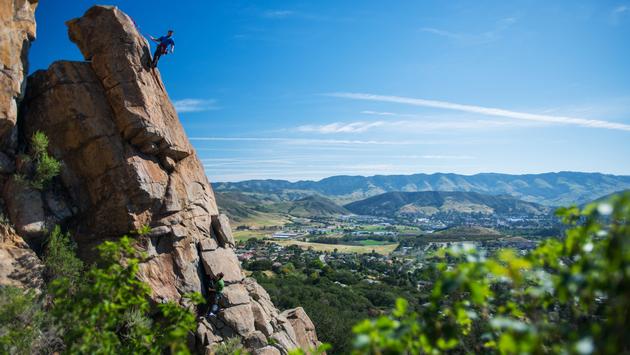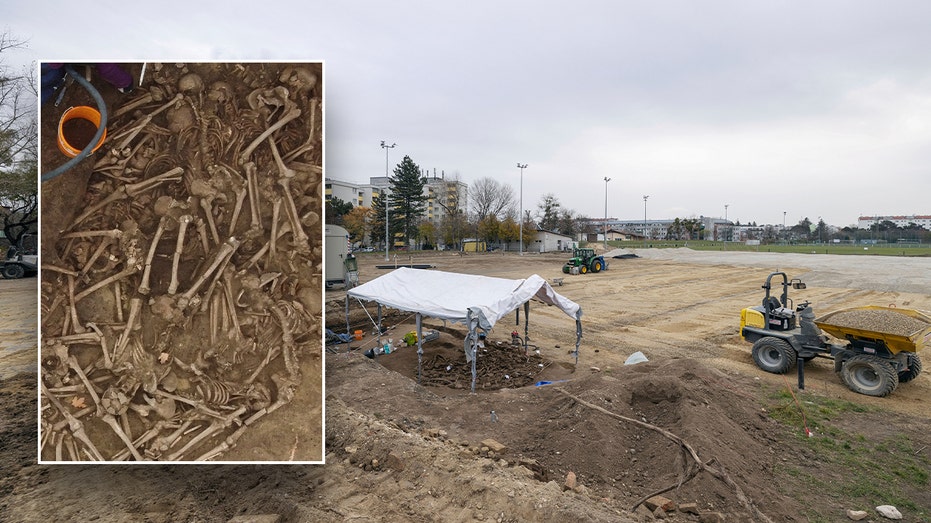- by foxnews
- 08 Apr 2025
Go SLO: Discover Sustainable Travel and Healthy Living in San Luis Obispo
A lesser-known destination, San Luis Obispo is the sustainable small city on California’s Central Coast that provides the change of pace you’ve been looking for.
- by travelpulse
- 11 May 2022
- in travel

San Luis Obispo. If you're not from California, you may never have heard of this little city with a great big heart. It's ideally situated along the historic coast Highway 1, halfway between Los Angeles and San Francisco, making it an easy stopover for those taking a trip up the iconic Golden State coastline.
The Catholic monks who founded their small seaside mission here back in the 18th century couldn't have known what it would eventually grow into. Or, how oddly apropos its acronymic alias-SLO, as it's known by locals-would seem to be 250 years down the line.
The pace of life here is just a little bit slower, the air a whole lot sweeter, and the local lifestyle simply seems more low-key and intentional than you'll find in most of California. There is a palpable sense of pride among the folks who call SLO home and a pervasive air of genuine hospitality wherever you go.
As the world emerges from the pandemic and people increasingly place a premium on slower and more sustainable travel styles, this quaint coastal destination stands to make quite an impact. Not just in terms of the tourism it attracts, but in successfully modeling sustainable methods in terms of land, water and cultural conservation, minimizing carbon emissions and implementing innovative renewable energy infrastructure.
Although "sustainability" has become a commonly used buzzword lately, here, it is perceptibly a point of pride and shared ethos among community members. Both residents and officials seem to have realized the rarity of the coastal jewel they inhabit early on and are continuing the decades-long work to preserve its integrity.
It's an undercurrent you can sense, whether you're stopping in at one of the downtown mom-and-pop shops or the locally-owned eateries; visiting one of the surrounding farms and vineyards; checking out the famous weekly farmer's market (which people travel hundreds of miles to attend and plan their weekends around) or staying in one of SLO's distinctive hotels.
While actually large enough to classify as a city with around 47,000 residents, SLO has managed to retain a genuine small-town feel. It's something you definitely sense during a visit-as friends and colleagues greet each other while walking down the street and strangers often discover during conversions that they have only a couple of degrees of social separation between them.
Occupying prime real estate just a few miles from the ocean, this particular spot enjoys a Mediterranean marine climate with year-round sunshine, which supports all sorts of impressive agricultural achievements, including a world-class wine region that rivals its better-known neighbors, like Paso Robles.
From the city center to the Railroad District, you'll encounter quaint historic buildings, small businesses and eateries, public artworks and murals (a refreshing change from the usual graffiti) and come across the 18-mile San Luis Obispo Creek, which is what drew the founding friars here and still runs right through the middle of town. And, in some of the older residential areas, see some adorable, well-preserved and charmingly reimagined versions of historic Victorian-era homes. And, really, the best way to explore the nuances of the area is on foot.
To help citizens cut down on carbon emissions, along with encouraging the individual health and wellness benefits, the city has been developed to be as walkable and bikeable as possible, with footbridges and bike paths connecting the various parts of town. You'll find bike racks installed at all trailheads, in front of most businesses and really just about anywhere else you can think of.
The Downtown area offers easy access to more than 55 miles of multi-use trails, which run through more than 3,500 combined acres of designated Open Space and are greatly appreciated by hikers, cyclists, dog-owners, equestrians and other adventurers. With its idyllic climate and beautiful scenery, this place is a haven for all sorts of outdoor enthusiasts. Active types can take advantage of many miles of dirt trails that provide panoramic views and back-country roads that wind through picturesque vineyards, ranches and farmland.
A particular point of pride in the region is the preservation of The Morros (often called the "Nine Sisters"), a chain of ancient volcanic peaks, which are now inactive and blanketed in greenery and form the distinctive hillscapes and valleys that have collectively formed SLO's microclimate and terroir.
As is always the case, one of tourism's primary roles is to infuse investment back into the local economy. But, when staying in SLO, travelers will discover that their hotel stays automatically contribute to some of the city's built-in environmental conservation efforts.
Through the 'Keys for Trees' program, just by staying at any of the area's 40ish local hotels, guests are aiding efforts to plant 10,000 new trees around town. A portion of their room charges automatically goes toward funding the project, which is largely volunteer-run and made possible through a partnership with EcoSLO's 'Urban Tree Planting' initiative.
At the non-profit City Farm SLO, an educational and experimental agricultural site run mainly by volunteers, locals and visitors come to learn about what it really takes to produce their food, establish a connection to the land and become engaged in the process. It's a small-scale operation that's testing and modeling regenerative, sustainable, pesticide-free methods and eco-friendly farming methods that could greatly benefit the world on a larger scale.
The participation of Cal Poly San Luis Obispo-one of only three polytechnics in the California State University system-in the community is also advantageous, with agricultural, plant- and animal-related studies being among its top fields and an educational approach that focuses on "learn by doing", which puts students to work solving real-world problems.
You'll find that most eateries in town buy direct from local farmers, both on principle and because the produce is mind-blowingly better than what you'll get from mainstream corporate food suppliers. So, you'll find fare here that's fresher, riper and has a richer (dare I say, explosive!) flavor, that's largely organically grown and filled with more nutrients supplied by the area's ancient volcanic soil.
Wherever you're dining while in town, it's likely that at least some of your meal's ingredients are locally grown, essentially farm-to-table. And, honestly, once you've tried a green pea or tomato that tastes unlike anything you've ever bought at a supermarket, it's difficult to go back. Vegetables here can have a completely different flavor than the one you've come to associate with them, and local produce has been known to make converts of former veggie-haters.
You'll also notice that SLO's eco-conscious eateries provide either non-plastic, biodegradable utensils or the traditional, washable variety, and that paper straws are ubiquitous wherever you go. Many places also provide filtered water refill stations so that everyone carrying their reusable bottles can easily stay hydrated and steer clear of turning to single-use plastics.
For more information, visit visitslo.com.
- by foxnews
- descember 09, 2016
Ancient settlement reveals remains of 1,800-year-old dog, baffling experts: 'Preserved quite well'
Archaeologists have recently unearthed the remarkably well-preserved remains of a dog from ancient Rome, shedding light on the widespread practice of ritual sacrifice in antiquity.
read more




